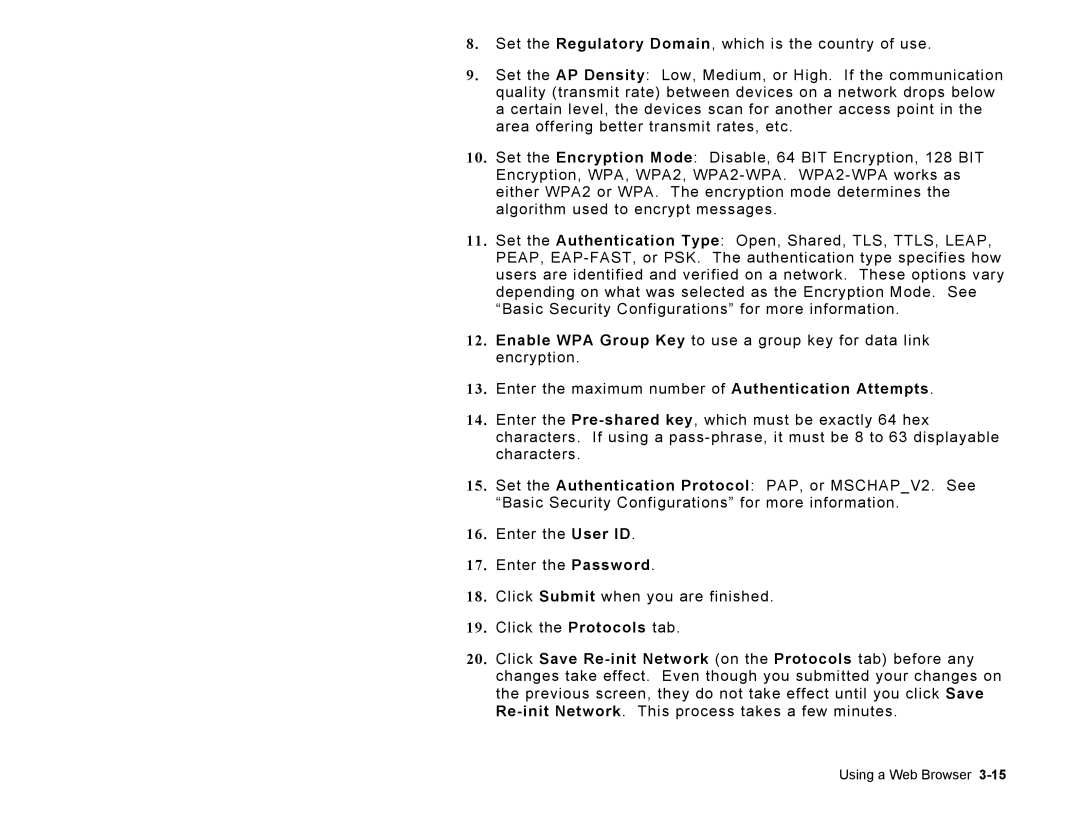8.Set the Regulatory Domain, which is the country of use.
9.Set the AP Density: Low, Medium, or High. If the communication quality (transmit rate) between devices on a network drops below a certain level, the devices scan for another access point in the area offering better transmit rates, etc.
10.Set the Encryption Mode: Disable, 64 BIT Encryption, 128 BIT Encryption, WPA, WPA2,
11.Set the Authentication Type: Open, Shared, TLS, TTLS, LEAP, PEAP,
12.Enable WPA Group Key to use a group key for data link encryption.
13.Enter the maximum number of Authentication Attempts.
14.Enter the
15.Set the Authentication Protocol: PAP, or MSCHAP_V2. See “Basic Security Configurations” for more information.
16.Enter the User ID.
17.Enter the Password.
18.Click Submit when you are finished.
19.Click the Protocols tab.
20.Click Save
